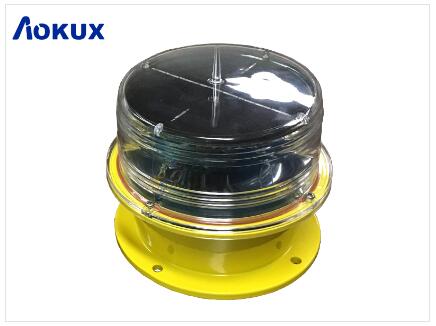
Ensuring aviation safety is a paramount concern that necessitates effective lighting systems to mark obstacles and guide aircraft. As technology advances, solar powered aircraft warning lights and tower aircraft warning lights have become increasingly vital in this domain. This article explores the characteristics, benefits, and technological advancements of these lighting systems, emphasizing their essential roles in enhancing aviation safety.
Solar Powered Aircraft Warning Lights
Solar powered aircraft warning lights are innovative solutions designed to mark obstacles such as towers, tall buildings, and wind turbines. These lights harness solar energy, making them ideal for remote or off-grid locations where traditional power sources may be unavailable or unreliable.
Characteristics
Energy Independence: Solar powered aircraft warning lights operate independently of the power grid. They are equipped with solar panels that convert sunlight into electrical energy, stored in batteries for use during nighttime or overcast conditions.
High Visibility: These lights utilize high-intensity LEDs to provide bright, clear illumination visible from significant distances. This ensures that pilots can easily identify obstacles, enhancing navigational safety.

Durability and Weather Resistance: Designed to withstand harsh environmental conditions, solar powered aircraft warning lights are built with robust materials. They can endure extreme temperatures, high winds, and heavy precipitation.
Autonomous Operation: Once installed, these lights operate autonomously with minimal maintenance. They are equipped with sensors to automatically turn on at dusk and off at dawn, ensuring continuous operation without manual intervention.
Benefits
Enhanced Safety: By clearly marking obstacles, solar powered aircraft warning lights significantly reduce the risk of aircraft collisions, thereby protecting both pilots and passengers.
Cost-Effectiveness: These lights eliminate the need for extensive wiring and electrical infrastructure, reducing installation and operational costs. Their reliance on solar energy also lowers ongoing energy expenses.
Environmental Sustainability: Utilizing renewable solar energy, these lights contribute to reducing carbon emissions and promoting environmentally friendly practices in aviation and construction industries.
Flexibility and Versatility: Solar powered lights can be easily installed in various locations, including remote or inaccessible areas. This flexibility makes them ideal for marking a wide range of obstacles, from communication towers to wind turbines.
Tower Aircraft Warning Lights
Tower aircraft warning lights are essential for marking tall structures that pose significant hazards to aircraft. These lights ensure that towers, whether for communication, construction, or other purposes, are visible to pilots during both daytime and nighttime operations.
Characteristics
Intensity Levels: Tower aircraft warning lights are available in various intensity levels, including low, medium, and high. The appropriate intensity level is chosen based on the height and location of the tower to ensure optimal visibility.
Color and Flash Patterns: These lights can be white or red, with specific color usage depending on the time of day. White lights are typically used during daytime, while red lights are used at night. Flash patterns are designed to attract attention and distinguish the lights from other sources.
Energy Efficiency: Modern tower aircraft warning lights utilize LED technology, which offers high energy efficiency and a longer operational life. This reduces both energy consumption and maintenance requirements.
Durability: Built to withstand various weather conditions, these lights are made from durable materials that can endure extreme temperatures, high winds, and heavy precipitation. This ensures reliable performance in all environments.
|
solar powered aircraft warning lights |
tower aircraft warning lights |
| 66 | 88 |